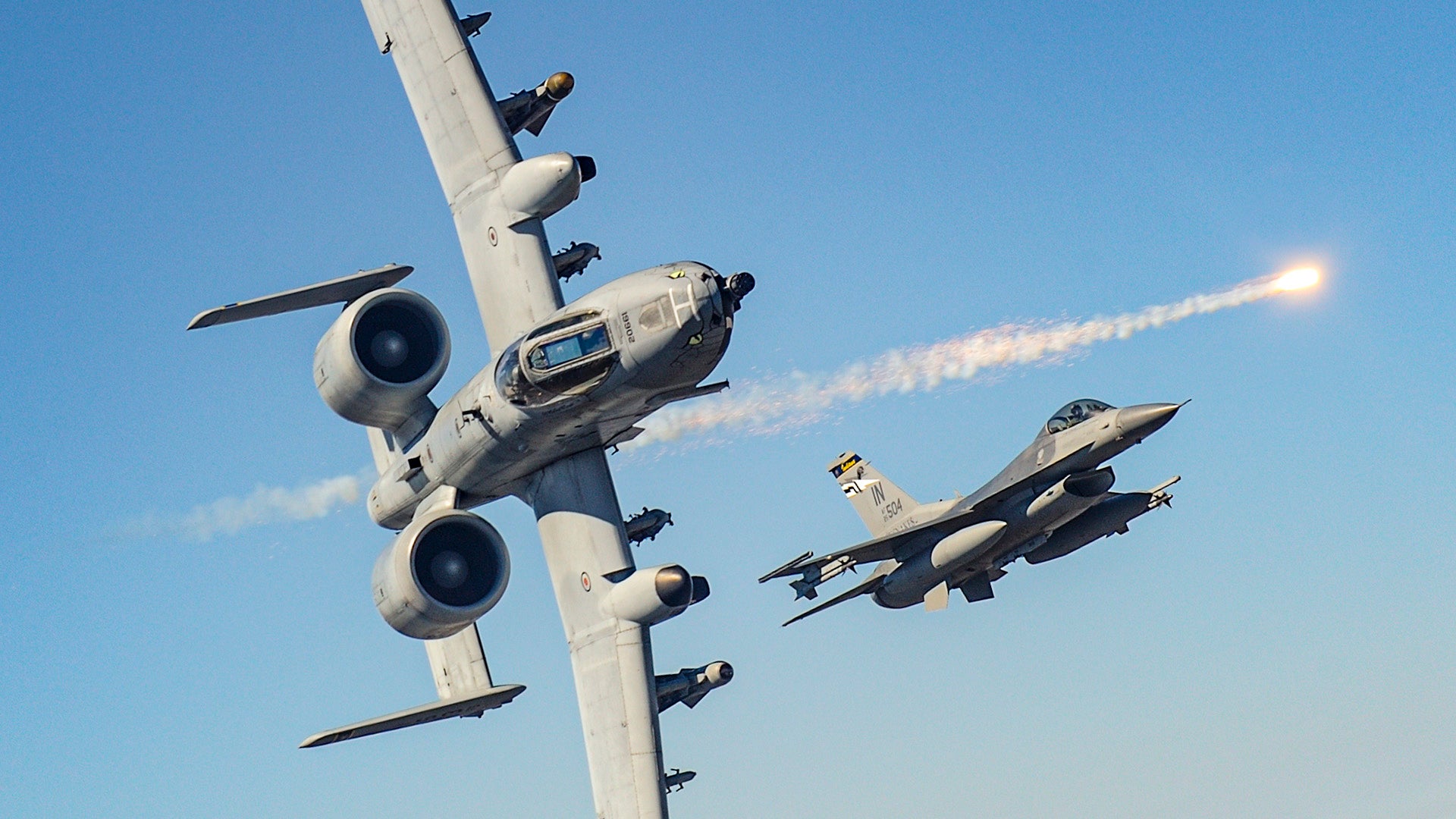While the Fairchild Republic A-10 Thunderbolt II is the king of close air support (CAS) — supporting troops on the ground with its blistering array of firepower — many would be surprised to know that it is also no slouch when it comes to air-to-air fighting. While the “Warthog” isn’t optimized for the air superiority role and lacks key capabilities, such as high-speed, radar, and radar-guided long-range missiles that make its fighter brethren such air-to-air supremos, even the greatest fighter pilots are rightfully wary of getting into a close-in turning dogfight with a ‘lowly’ mud-moving A-10.
The slow-speed agility of the tank-busting Warthog, combined with some clever tactics, means that even the most advanced fighter aircraft can get a nasty sting from an accomplished “Hog” driver. Indeed, the U.S. Air Force Weapons School at Nellis Air Force Base in Nevada, actually teaches the art of Basic Fighter Maneuvers (BFM) in its bi-annual A-10 class, just in case pilots find themselves in a sticky situation with a pouncing enemy fighter.
Colonel Denny “Gator” Yount retired from the USAF in 2011 with an impressive 3,852 hours in the A-10. He says that of the many highlights in his career, specializing in A-10 BFM at the Weapons School as an instructor ranks as one of the most rewarding. “The air-to-air guys have a radar and they are a lot faster than we are, but they quickly learn that it doesn’t pay for them to get into the proverbial phone booth with us for a close-in dogfight.”
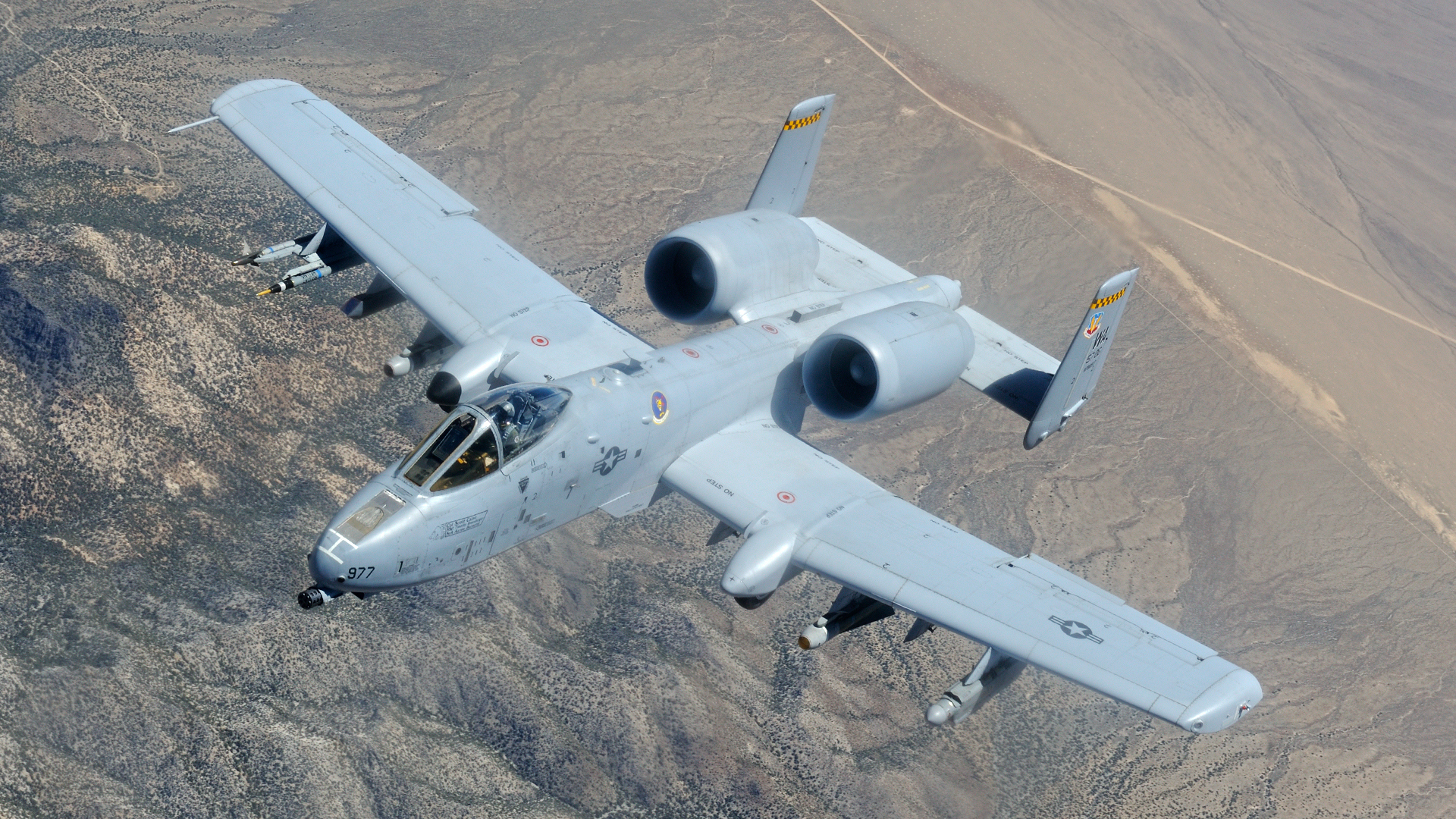
“The Weapons School takes the best of the best pilots from the operational A-10 wings. It runs two six-month courses each year and the students start out with academics for a couple of weeks and then they begin flying,” explains Yount. “BFM was, and still remains, the first phase of the course. It’s like planting the flag — no matter how good the student thinks they are, this is how tough the course is going to be. The Weapons School flies at a level the students have never previously experienced.”
Yount went through Weapons School in 1993 as a student. As he stated, today, the 66th Weapons Squadron’s A-10 course at Nellis still kicks-off with BFM as its opening phase. While it teaches pilots how to react to an air threat, it’s more geared towards teaching them how to max-perform the Warthog — pushing it right to its prescribed limits — before progressing into the more traditional A-10 air-to-ground mission sets. On the A-10 Weapons School course, the students will drop and employ almost every weapon in the Hog’s impressive arsenal.
Yount returned to Nellis as a Weapons School instructor from January 1996 until October 1999. “I was primarily the BFM guy,” he explains. “We pretty much stripped the airplanes off — most of the pylons and TERs [Triple Ejector Racks] — but kept two AIM-9 Sidewinders and our ECM [electronic countermeasures] pod. We taught the principles of BFM, which was based around 1-v-1 close-in fighting with another A-10. The BFM phase led into an ACM [Air Combat Maneuvering] phase, and we did some 2-v-1 and 2-v-2 set-ups. We used to bring in the German F-4 training unit from Holloman [AFB, New Mexico] or work with the Nellis aggressor F-16s.”
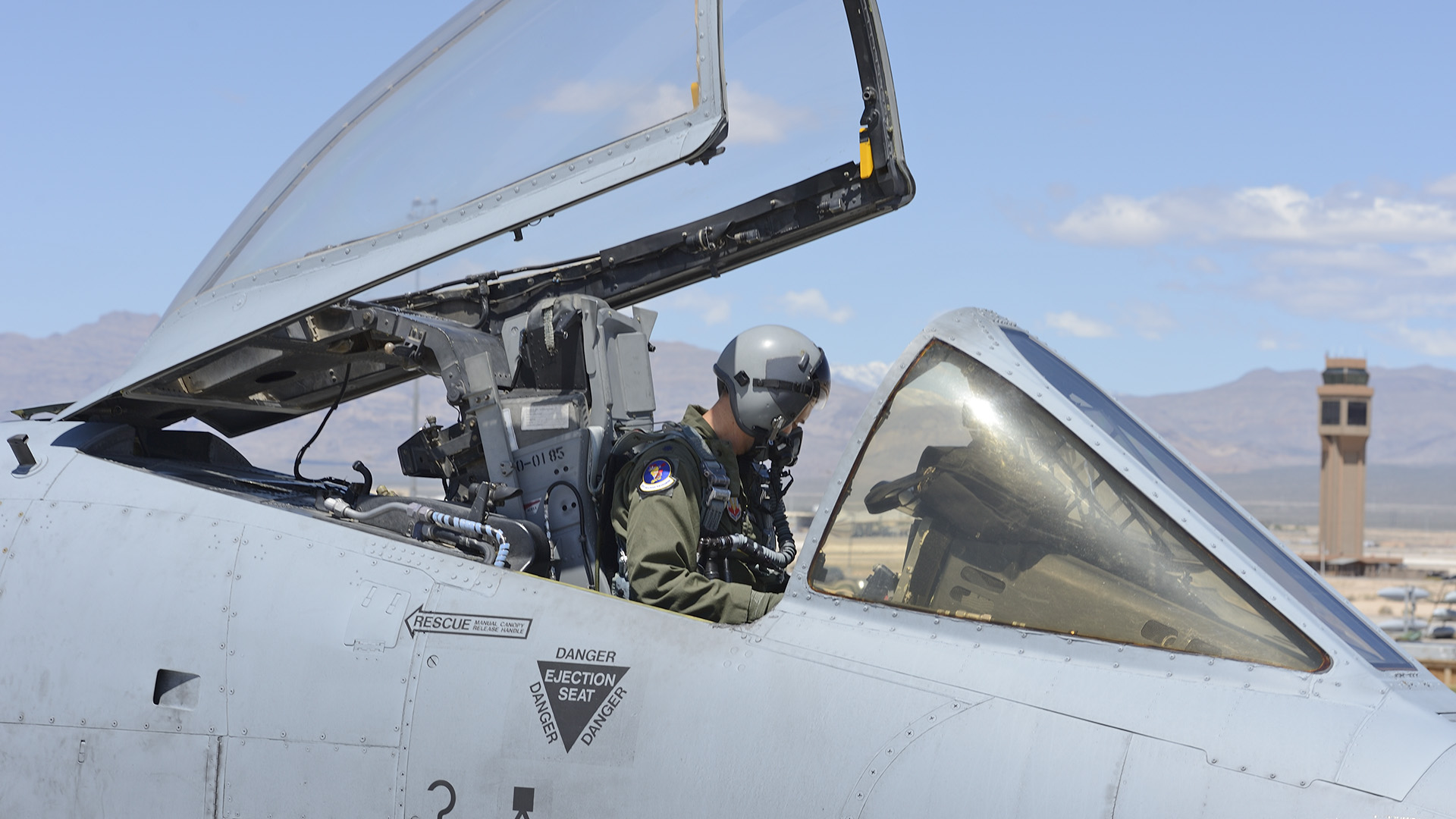
“Even if a student was pretty good, if they couldn’t teach the techniques, they were no good to us as a Weapons Officer. Whether you’re the best bomb-dropper or best at BFM, if you can’t go back to your squadron and teach it, you’re worthless. You’ve got to be able to spread the knowledge in the squadrons.”
“BFM was one of my natural inclinations,” Yount continues. “I was always pretty good at it, having started out as a T-38 Talon Instructor Pilot. Some of my F-15 friends taught me the basics. By the time I went through Fighter Lead-In Training in the Talon, I had about 1,200 hours in that jet.”
Yount says operational A-10 squadrons don’t regularly practice BFM at the unit level, because they typically have so many higher-priority boxes to tick for CAS and bomb-dropping, for example. However, there are examples of fighter squadrons requesting Dissimilar Air Combat Training (DACT) with A-10 units to gain insight into dealing with this tricky opponent.
One F-16 pilot told The War Zone “We actually fly DACT with A-10s quite a bit. We call it “Hog Popping” and it’s quite popular! They start their circle of Hogs to cover each others’ six o’clocks in a defensive posture. Then we poke our noses in and try to pick them off. The key is to come in with lots of speed, shoot, and climb back up where the “Hogs” don’t have the energy to point their nose up.”
Yount says: “The fighters generally stay high and try to point their nose in, trying to get the shot, and then get the hell out of there — because we can’t chase them out high and we can’t run them down. But if they stay in the turning fight with us in our environment we are very happy to do that all day long.”

“BFM is a mission set that A-10 guys hopefully never have to use, because the theory is that you’re doing it in self-defense. The F-15s, or other Defensive Counter Air jets, should be on top of us, keeping all that stuff out of our way. But if you get a “leaker” [an enemy fighter that gets past the DCA] you need to train how to survive with the two AIM-9M Sidewinders and the ECM [AN/ALQ-131 electronic countermeasures] pod. These are the only things that stay on the airplane if you hit the big red button to punch off the stores.” This throws off the excess weight and drag of the external stores, making the A-10 more agile, and giving the pilot a greater chance of evading the threat.
The Radar Warning Receiver (RWR) in the A-10 alerts the pilot if the aircraft is being tracked by an enemy radar. The ECM pod provides an opportunity to jam the fighter’s radar, however, Yount says at this point the main tactic is to try and get into the doppler notch [a tactical move used to hide in a fighter radar’s blind spot, that you can read all about here], to change altitude, and try to pitch back into the approaching fighter. “Whether you are the attacker or the defender, you want to make the first move. If you aren’t driving the fight, you’re being driven.”
“Most pilots of other types didn’t really understand our strengths until they had fought us a few times. Regardless of their turn rate, the best turn radius will get the first shot opportunity. At the corner, our turn radius was about 1,700 feet, and when I’m almost dead out of energy it’s about 2,100 feet — that’s not very big at all. So, even if they can out rate me, my gun can cross their nose before they can come around. They have to respect that gun — which means they have to jink out of the way, which in turn presents some opportunities. If you put an A-10 in that close turning fight, we do very, very, well.”
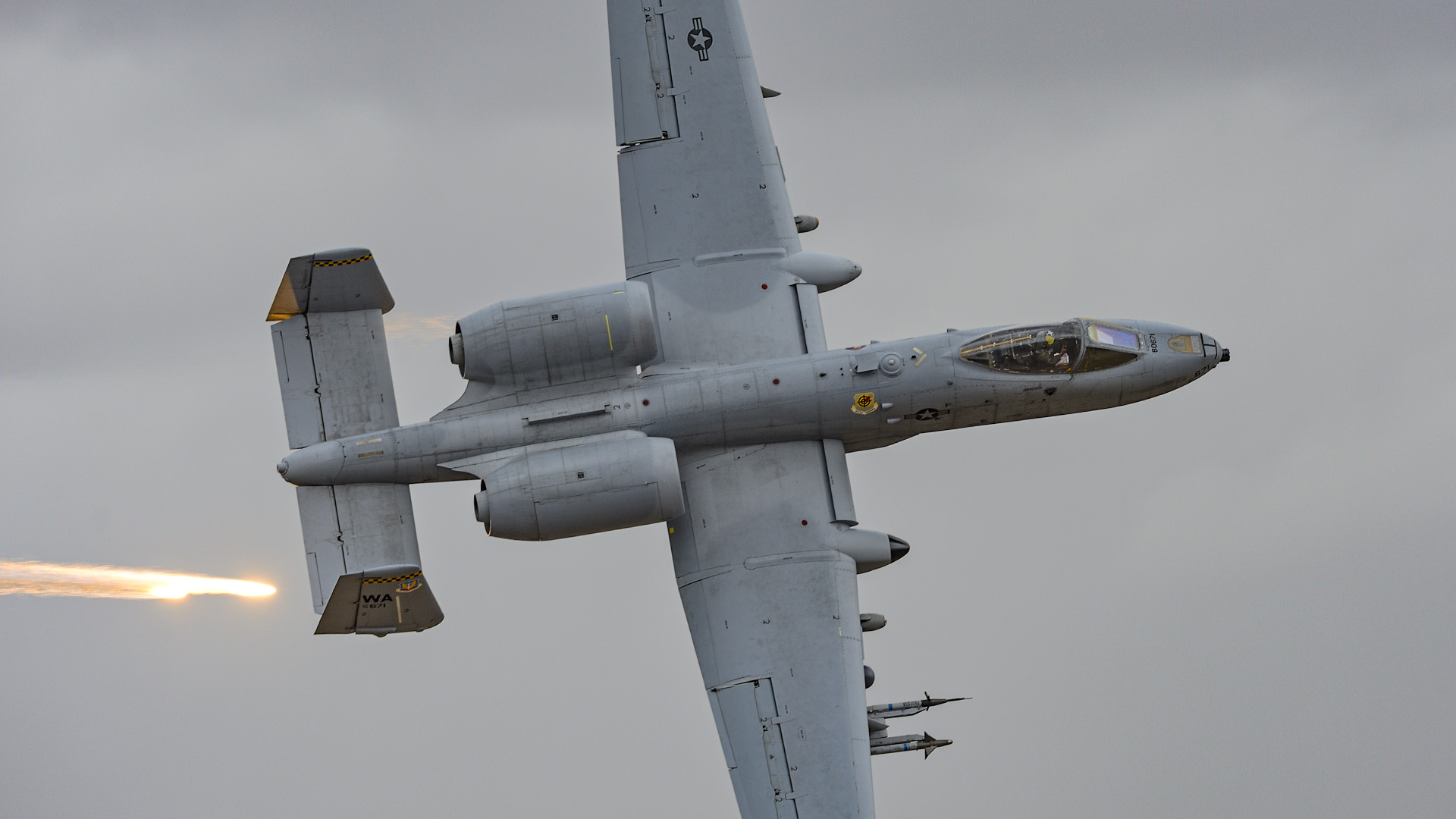
The two offensive weapons available to an A-10 pilot in this situation are the AIM-9 Sidewinder heat-seeking missile, and the fearsome GAU-8/A Avenger 30mm seven-barrel Gatling-style cannon, which is traditionally regarded as an air-to-ground strafe weapon, but it’s also very lethal for air-to-air gunnery. The A-10 is not equipped with the newer AIM-9X, so despite pilots now wearing the Thales Scorpion helmet-mounted sight, they aren’t able to engage an adversary with a high off-boresight missile shot. Therefore, the turn rate is critical when it comes to bringing the Sidewinder or the gun to bear on an enemy bandit.
“If they get into the turning fight with us they deplete a lot of energy,” explains Yount. “Then they want to bug out, light the afterburner and get away — but all that does is make my AIM-9 lock-on alarm scream louder!”
If the pilot selects the AIM-9 it switches the weapons system in the A-10 to an air-to-air mode. If the pilot wants to employ the gun, it presents a “funnel” in the Head-Up Display (HUD) to give the pilot an idea of the bullet track and distance to the target. The A-10 lacks a radar, so using this symbology effectively is as much an art form as a science. Yount says selecting the AIM-9 or the gun very much depends on the range of the opponent. “When we train, of course, we don’t have live rounds in the gun — we are only shooting electrons — but you can still see everything in the HUD.”

“What you can’t simulate is the effect of the gun firing,” Yount enthuses. “That plume of white smoke usually flows underneath the airplane, but when it rolls up over the canopy, it shows you’re pulling hard and it has a real effect on the opponent, knowing they are being fired at by that gun. It helps with you being really threatening — make them want to get out of the way of the gun and the Sidewinder, so they have to go away, and then re-engage.”
“You’re going to do a one-to-two second burst with the gun, that’s about 100 rounds. You can’t just hammer down. I’ve shot the gun in an air-to-air scenario while pulling Gs, and when you’re pulling hard, the smoke is flowing up and over the canopy — you can’t see!”
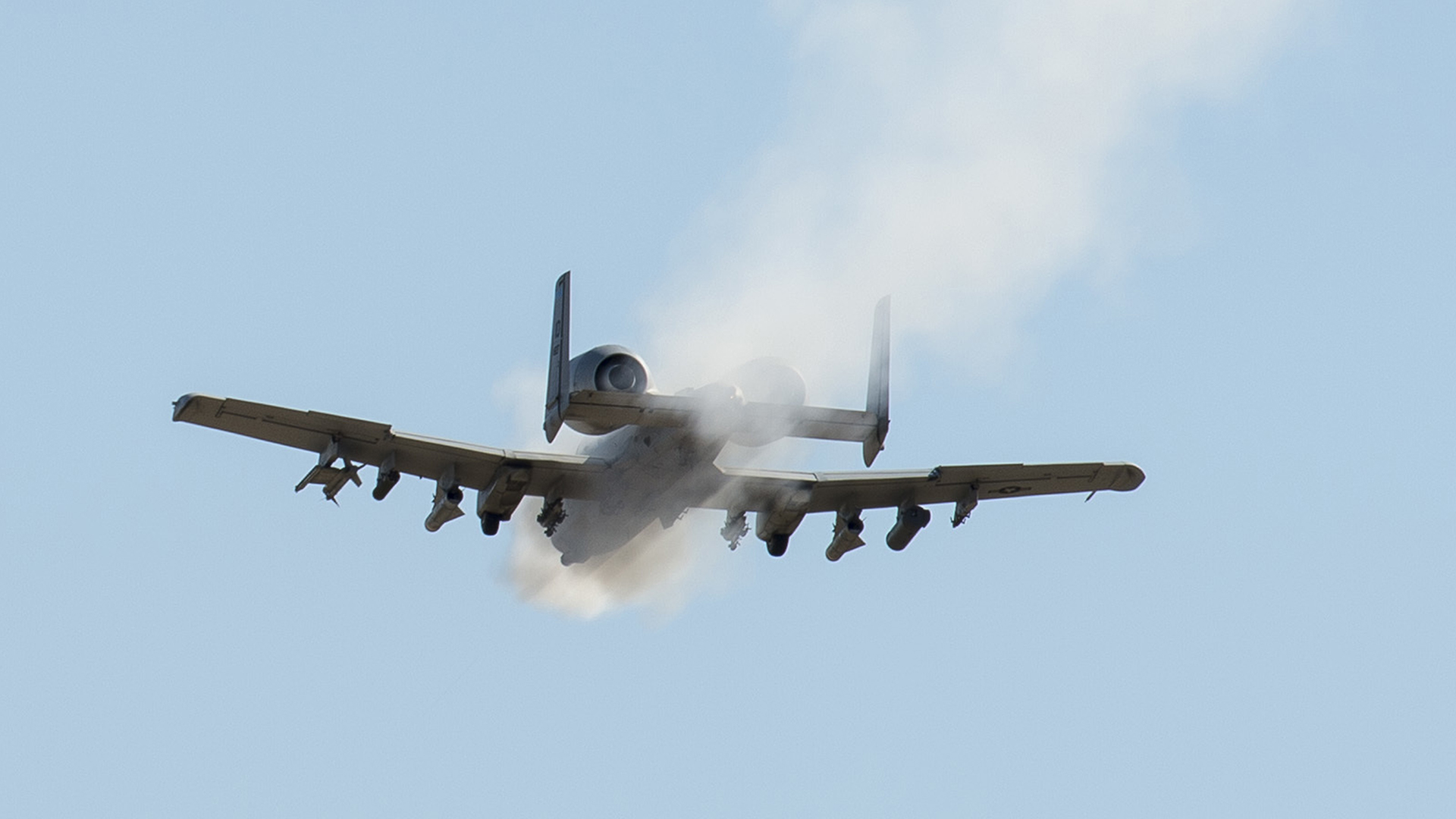
When a fighter squadron plans some dogfighting time with A-10s, it does so with a mindset that the Hogs are at a clear disadvantage. So there are some sensible limitations placed on the fighters, such as the air-to-air hardware that they can employ.
Recalling a recent DACT detachment to fight with A-10s, one F-15C pilot told The War Zone: “The slow speed handling and tiny turn circle size threw most of us off for the first fight. A lot of the fights ended neutral — apart from when we took shots with our AIM-9X combined with the Joint Helmet-Mounted Cueing System of course. Some Hogs took shots on us — mostly with the gun because we aren’t used to looking at an A-10, so range cues were a lot different, plus their gun has so much longer range than the cannons in most fighters. However, they don’t have exact ranging, so any time they can point at you they will call a gunshot, regardless of whether it will get there or not. All the shots I saw were at least in the ballpark, but they are just being taken way longer ranges than anyone else — so guys aren’t expecting that. It’s really hard to aim that far away, so I’m not sure how it would’ve gone if it had been real.”
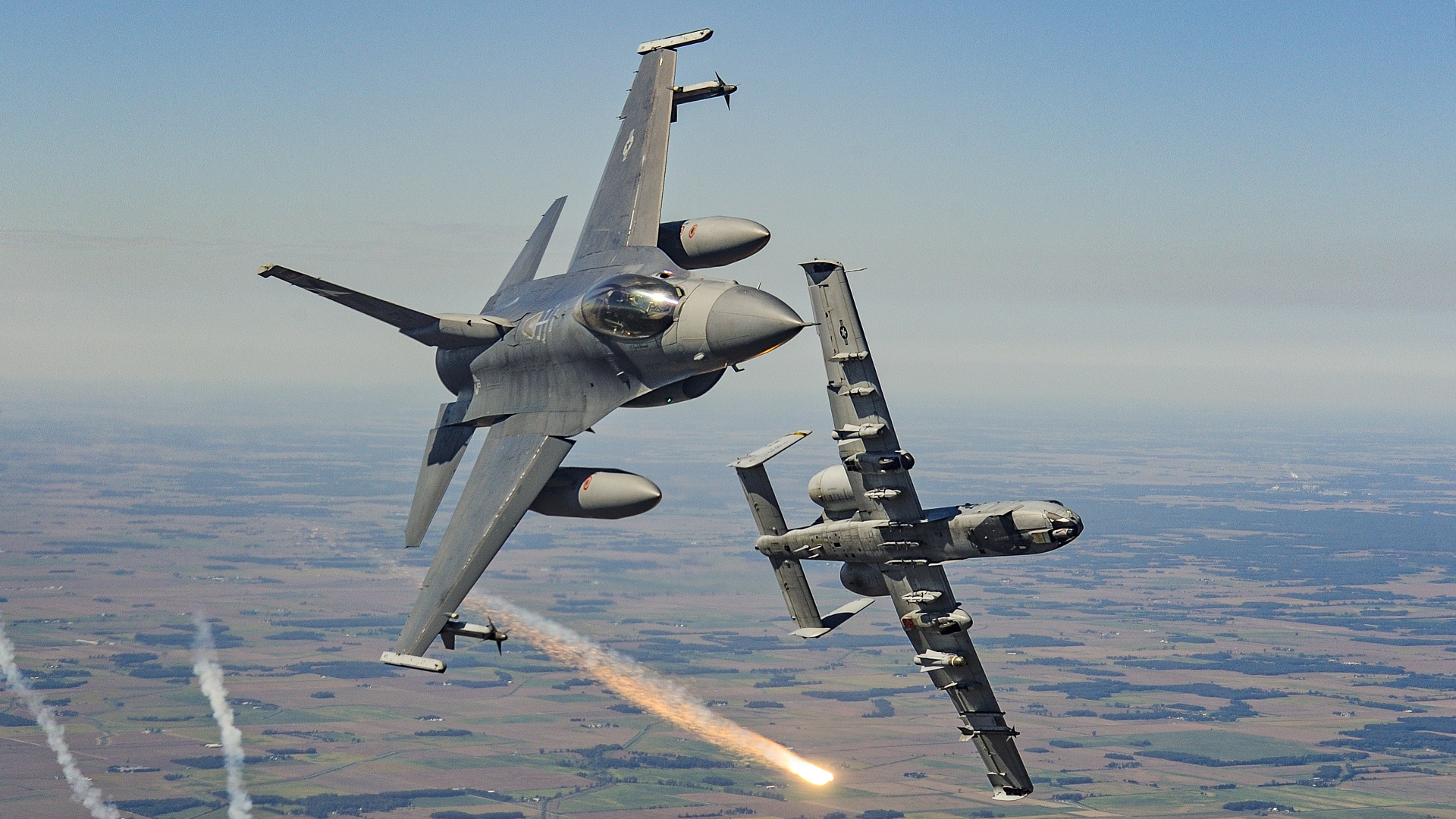
The Weapons School used to conduct air-to-air gunnery detachments to Tyndall AFB, Florida, to live-fire AIM-9s as well as to shoot the Aerial Gunnery Target (AGT) with the Avenger cannon. “An F-15 would pull the AGT for us, but we had to be really careful not to hit that, because our rounds would just shred it. So we had to go for near misses, and use the acoustic scoring system that picked up the “cracks” as the rounds shot past.”
Discussing the BFM techniques he taught at the Weapons School, Yount says: “We started out with the offensive aircraft in a high perch behind the defensive aircraft, so it had every advantage. You move into the 6,000-9,000-feet range in a five to seven o’clock position, then it’s “ready, ready, fight’s on!” We then moved into some neutral setups where we would split, point at each other, and when we passed abeam each other, we called “fight’s on” at the merge.”
Chasing down an opponent, Yount says “you want to be just outside the flightpath and slightly high. If you think of them towing a cone-like a windsock behind, that’s where you want to be — just above that sock, and stay there. About 1,500-6,000-feet back works for any airplane, but staying there is tough. I can drag my lower wing through that wake turbulence, and that’s how I taught guys where they needed to be if they couldn’t visualize it — that’s the flight path.”
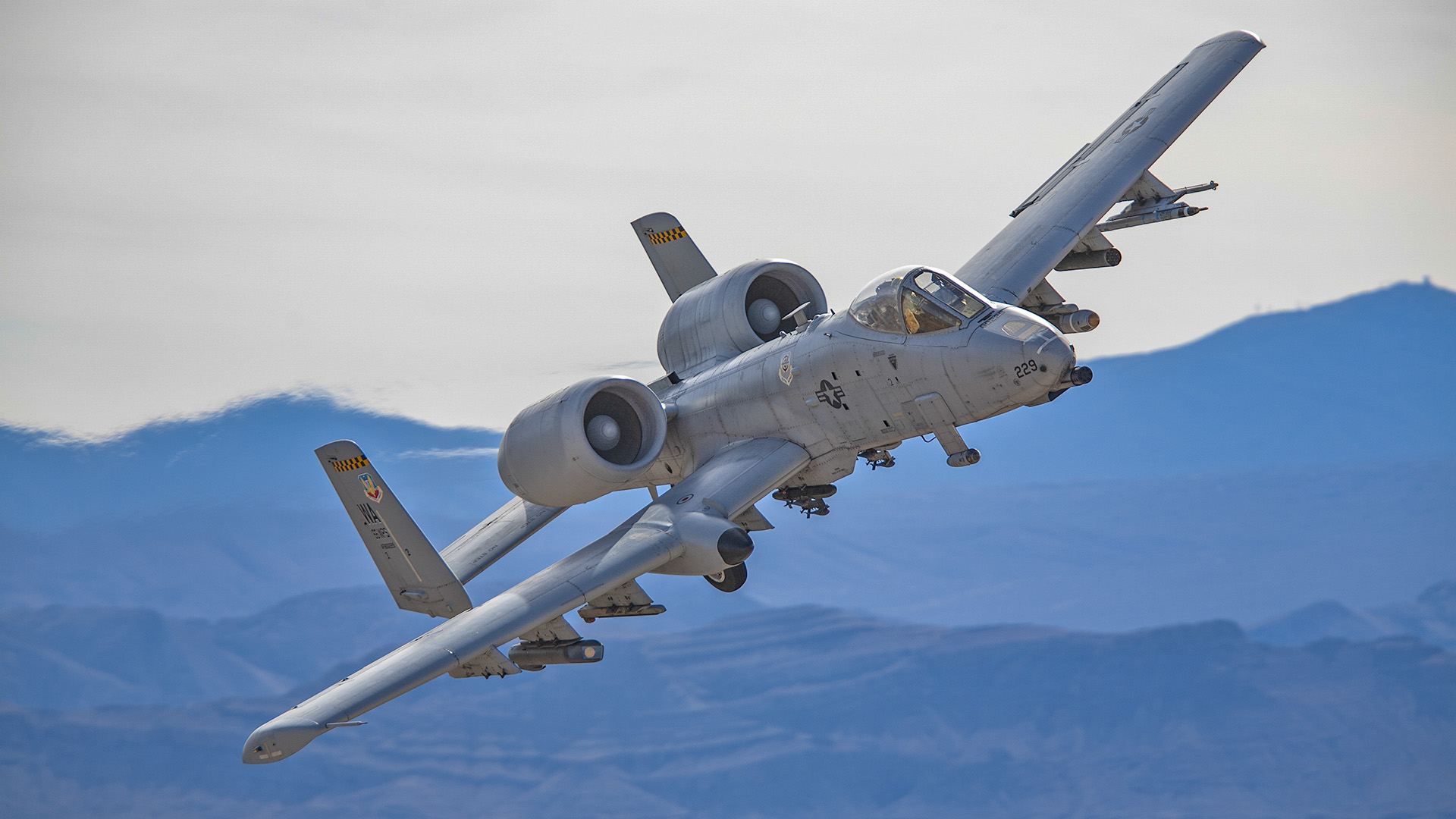
“As a defender, I used to call it my “cone head defense.” I’d take my arms and put them above my head to make a cone — that’s what you want to point at the opponent, because that’s the top of your lift vector. If they slide back, it’s harder to get the cone pointing at them — they’re building angles on you.”
The A-10 pilot has an audible stall warning system known as the “horn,” which advances in a “chopped tone” under sustained heavy G. These are staged warnings as a measure of the aircraft’s performance. “There are slats on the leading edge of the inner portion of the wing,” Yount explains. “If you get the chopped tone too long, you’ll stall that portion of the wing. I could trim the airplane to a speed and I didn’t need to jink all over the place, I just had to keep that cone on the other jet. I could just put my hands above my head and fly with my knees.”
“We also did some low-level escape and evasion. Most guys weren’t trained down to 100 feet — and chasing students down at that height is a lot of fun! Get below 80 feet with any kind of downward vector and “Bitching Betty” would ask you to pull up.”
“If you are down low, you have some advantages in the air-to-air fight with ground clutter or if the pilot of the other jet just didn’t want to follow you down there. But it’s better to maintain height, because it gives you more options.”
“What the A-10 doesn’t do very well is get its energy back quickly. We always said with regard to the [General Electric TF34] engines that we don’t need more speed, we need more power. The speeds we operate and drop at are plenty fast enough for what we are doing. For BFM, we are at a great speed and turn radius to point and shoot.”
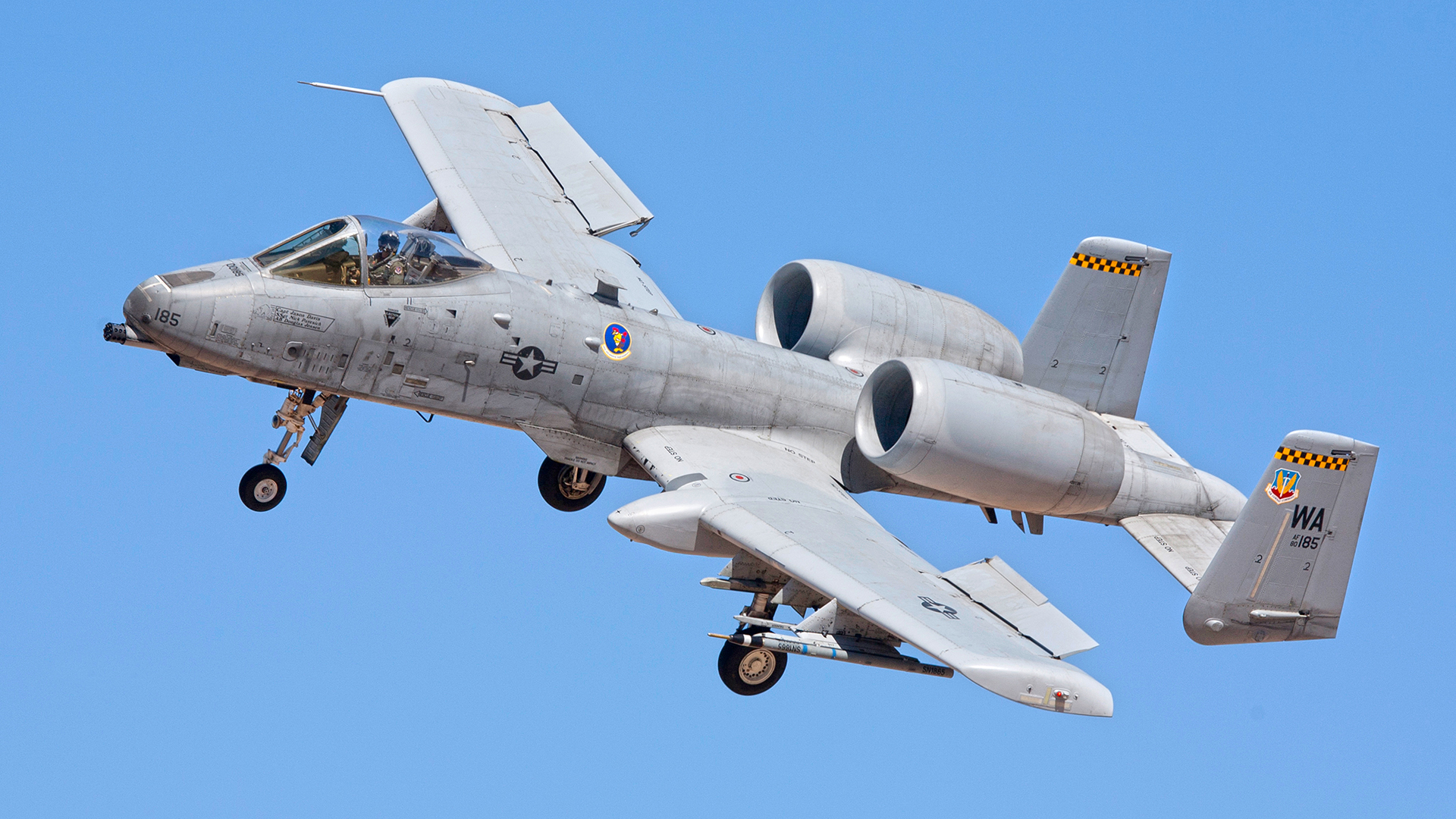
Despite the many attempts to kill-off the A-10, Yount is adamant that no other jet can do the job like the Warthog. “Until the USAF has a platform that can turn on a dime and bring all those weapons to bear at relatively close quarters, there’s no substitute for that.”
While the A-10 has a ferocious reputation for supporting troops on the ground, and for Combat Search And Rescue, wheeling above the battlefield and dishing out punishment where it’s needed, it also has a nasty bite if any enemy fighters want to give them a hard time.
Instructors like Colonel Yount made it their job to ensure that if the time came when an A-10 pilot was threatened by a marauding fighter, they knew exactly what to do, so they could defend themselves by either putting up a fight or running away bravely to fight another day.
Contact the editor: Tyler@thedrive.com
